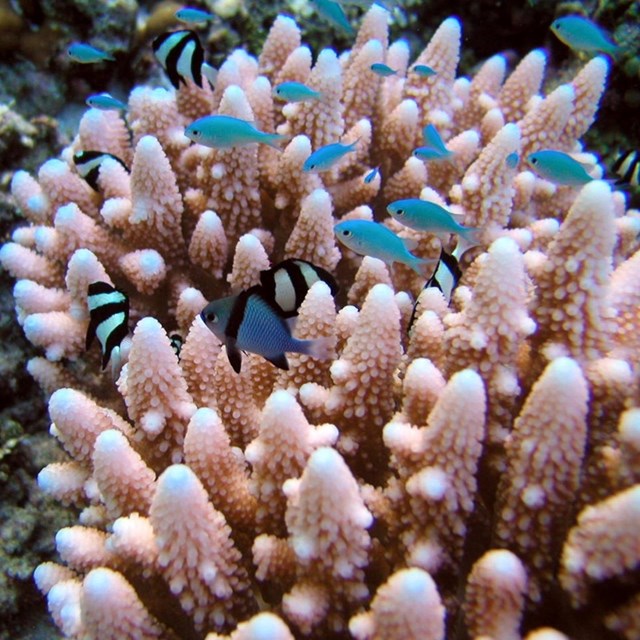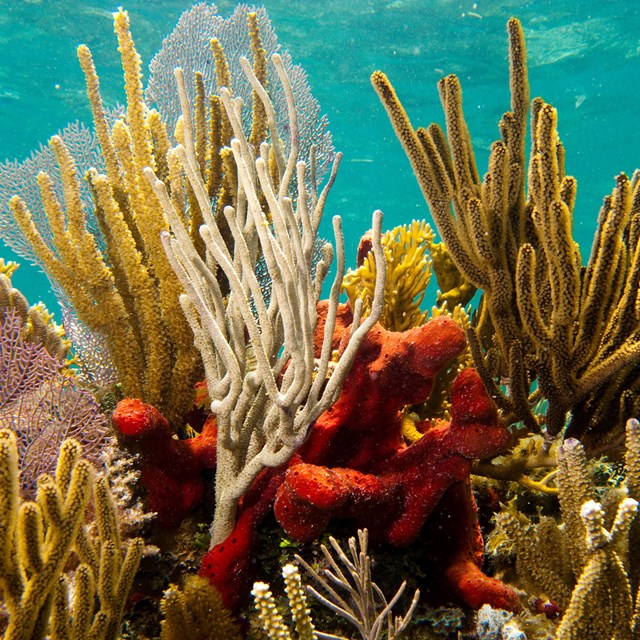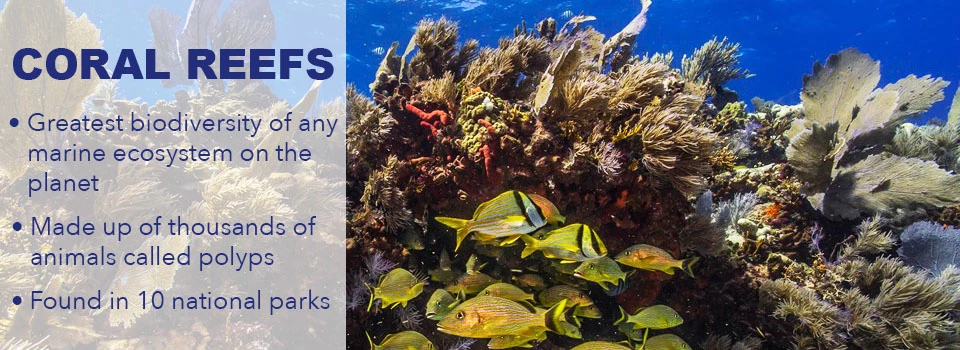
Coral Reefs are amazing habitats; offering vibrant colors and the greatest biodiversity of any marine ecosystem on the planet. Some coral reefs are so large they are even visible from outer space! But coral reefs only occupy less than one tenth of one percent of the ocean floor. The National Park Service has ten parks with coral reefs stretching from the Pacific Ocean to the Atlantic Ocean. Coral Reef National ParksTypes of Coral in National ParksThere are hundreds of species of coral found in National Park oceans. National park of American Samoa has over 250 species of coral alone! Some common corals you can expect to find in national parks are elkhorn coral, staghorn coral, boulder coral and brain corals. 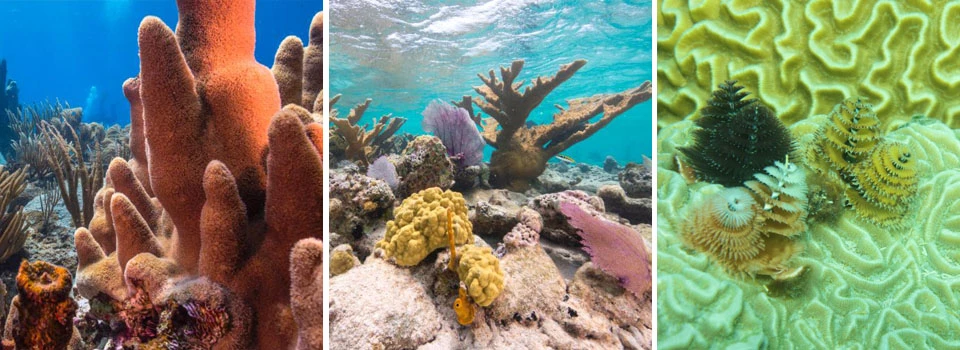
NPS Photos How are coral reefs formed?Corals reefs are formed over a process of thousands of years. Each coral reef is made up of colonies of tiny animals called polyps. Each polyp produces calcium carbonate, which makes up their skeleton and protects corals internal bodies; similar to how our skeleton protects our organs. Polyps on their own are colorless, however, each polyp attracts large amounts of algae, called zooxanthellae. These algae live inside the cells of the polyp and gives corals their vibrant colors. Corals, and the algae inside their polyps, rely on sunlight to produce the energy needed for them to survive and grow. That’s why most coral reefs can be found in shallow, clear water along the coast. Corals crave the marine conditions found in the warm waters of the tropics and sub-tropics. 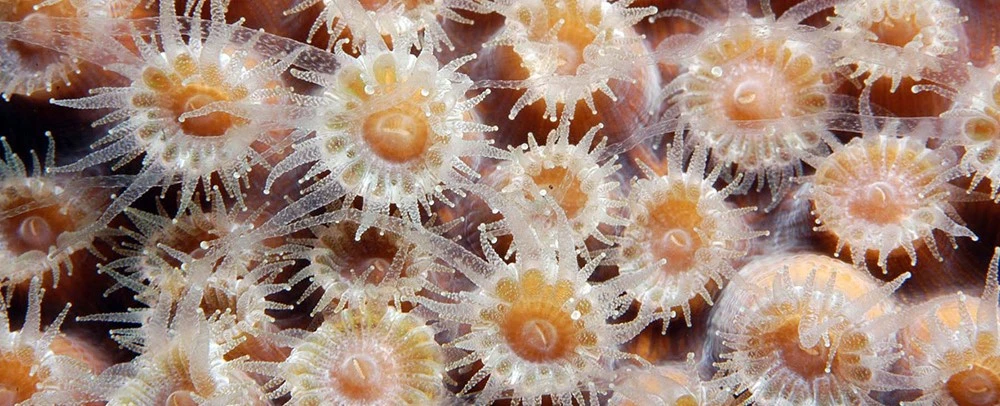
NOAA Photo/Schmahl Benefits of Coral ReefsCoral reefs are vital for a healthy ecosystem.
Threats to Coral ReefsCoral reefs are fragile and sensitive to changes in water quality and temperature. When pollution causes changes in water quality or temperatures exceed their natural tolerances, corals will become stressed and may die if conditions don’t improve. Stressors to coral reefs are:
NPS ResponseThe National Park Service studies and monitors coral reefs closely to understand patterns in reef health. Coral reef parks have regulations to prevent damage from boats and anchors. Certain parks also restrict fishing to maintain healthy populations of reef fish. In addition to protecting corals, parks also restore coral reefs by creating underwater nurseries for coral fragments to grow. These fragments can be placed onto reefs and will grow to form new reef structures and provide important habitat for marine life in the coral reef ecosystem. Inventory & Monitoring
Learn More |
Last updated: June 8, 2022

